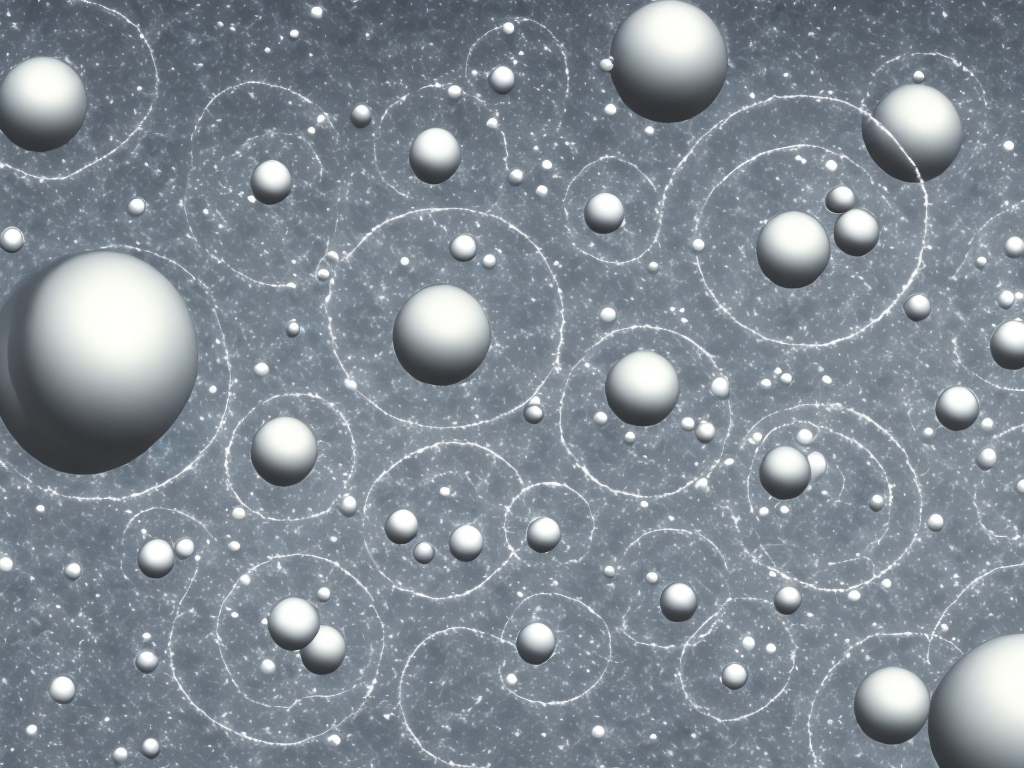
Atoms and molecules are some of the most fundamental units of matter. They are found all around us in the air we breathe, the food we eat, and the objects we use daily. But what exactly are atoms and molecules, and how do they differ from one another?
At its simplest, an atom is the basic building block of matter. It is the smallest particle of an element that retains the chemical properties of that element. Atoms are made up of subatomic particles, including protons, neutrons, and electrons. The protons and neutrons are found in the nucleus, which is the center of the atom, while the electrons move around the nucleus in orbitals.
In contrast, molecules are formed when two or more atoms bond together. A molecule is a group of atoms held together by covalent, ionic, or metallic bonds. Covalent bonds occur when atoms share electrons to form a stable compound. Ionic bonds occur when atoms gain or lose electrons to achieve a stable electron configuration, and metallic bonds occur when atoms share a sea of delocalized electrons.
So, the primary difference between atoms and molecules is that atoms are singular entities, while molecules are groups of atoms bound together. While atoms can exist on their own, molecules require multiple atoms to form. In other words, atoms are the basic building blocks of matter, and molecules are composed of multiple atoms that have bonded together.
Another difference between atoms and molecules is their properties. Atoms have specific properties based on the number of protons they contain, known as their atomic number. For example, an atom of carbon has six protons, while an atom of oxygen has eight protons. These differences in atomic number give each element its unique chemical properties.
Molecules, on the other hand, have properties based on the types of atoms that make up the molecule and the way in which those atoms are bonded. For example, a molecule of water contains two hydrogen atoms and one oxygen atom bonded together by covalent bonds. The properties of water, such as its boiling point and ability to dissolve solutes, are due to the chemical properties of the individual atoms that make up the water molecule.
The size of atoms and molecules also differs significantly. Atoms are incredibly small, with a typical size of around one tenth of a nanometer (10^-10 m). This size makes them virtually impossible to see with the naked eye. Molecules, on the other hand, can vary greatly in size depending on the types and number of atoms that make up the molecule. For example, a molecule of glucose, which is a simple sugar, contains 24 atoms and has a size of around one nanometer (10^-9 m). Obviously, larger molecules can exist, such as proteins and DNA, which can contain thousands or even millions of atoms.
Another significant difference between atoms and molecules is their behavior. As individual entities, atoms have specific physical properties such as size, mass, and charge, which affect how they interact with each other. Molecules, on the other hand, can exhibit unique physical and chemical properties depending on the types and positions of atoms within the molecule.
For example, a molecule of water consists of two atoms of hydrogen and one atom of oxygen. Because of the unique properties of the water molecule, it exhibits characteristics such as surface tension, adhesion, and cohesion, which are not seen in individual atoms. This difference in behavior is due to the way in which the atoms interact with each other within the molecule, creating a unique set of physical and chemical properties.
In summary, the differences between atoms and molecules are significant. Atoms are single entities that form the basic building blocks of matter, while molecules are groups of atoms that have bonded together to form more complex structures. Atoms have unique physical and chemical properties based on their atomic number, while molecules have properties based on the types and number of atoms within the molecule and how they are bonded together. While atoms are incredibly small, molecules can vary greatly in size depending on the types and number of atoms they contain. Finally, atoms exhibit specific physical properties, while molecules exhibit a unique set of physical and chemical properties based on the individual atoms that make up the molecule. Understanding these differences is crucial in understanding the behavior and properties of matter at the atomic and molecular level.
 Self-Instruct
Self-Instruct